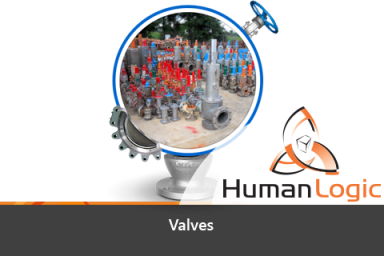
Course Overview
Industrial valves are one of the important pieces of capital equipment. Valves can be used in pressures from vacuum to over 13,000 psi or 897 bar and thus find wide application across domains from manufacturing to even construction. This module covers the domestic and industrial applications of valves, various components, working principles, and types of valves used in process industry.
Target Audience
Oil & Gas and Manufacturing Industries
Learning Objective
- Recognize different types of valves and their applications in daily life.
- Explain the basic components of a valve.
- List types of valves used in the process industry.
- Describe valve design.
- Explain the different components of a valve.
- Describe their working principle.
- List their typical applications.
- Describe valve characteristics with respect to pressure and flow.
- List their advantages and disadvantages.
- Explain how to diagnose a problem with these valves and derive a solution.
- Explain the different components of the plug valve, needle valve and cock valve.
- Describe the working principle of these types of valves.
- List their typical applications.
- List the advantages and disadvantages of these valves.
- Explain how to troubleshoot these valves.
- Identify Diaphragm Valve, Butterfly Valve and Ball Valve.
- Explain the different components of Diaphragm valve, Butterfly valve and Ball valve.
- Describe the working principle of these valves.
- List the typical applications of Diaphragm valve, Butterfly valve and Ball valve.
- Describe the valve characteristics with respect to pressure and flow.
- List the advantages and disadvantages of these valves.
- Explain how to troubleshoot the problems faced with Diaphragm valve, Butterfly valve and Ball valve.
- Explain the different components of rotary valve, 3-way valve, and check valve.
- Describe their working principle.
- List their typical applications.
- Describe valve characteristics with respect to pressure and flow.
- List their advantages and disadvantages.
- Explain how to troubleshoot these valves.
- Explain the different components of the pressure relief valve, pressure safety valve, and vacuum relief valve.
- Describe the key components of each valve.
- Explain the working principle of each valve.
- List the typical applications of each valve.
- List the advantages and disadvantages.
- Describe the troubleshooting.
- Describe rupture discs.
- Explain what dampers are; Describe guide vanes.
- Describe the components of Motor Operated Actuator and Pneumatic Actuator.
- Explain the functioning of Motor Operated Actuator and Pneumatic Actuator.
- Explain valve maintenance procedures.
- Describe the components of hydraulic actuator and solenoid actuator.
- Explain the functioning of hydraulic actuator and solenoid actuator.
- Describe the operation of valves.







